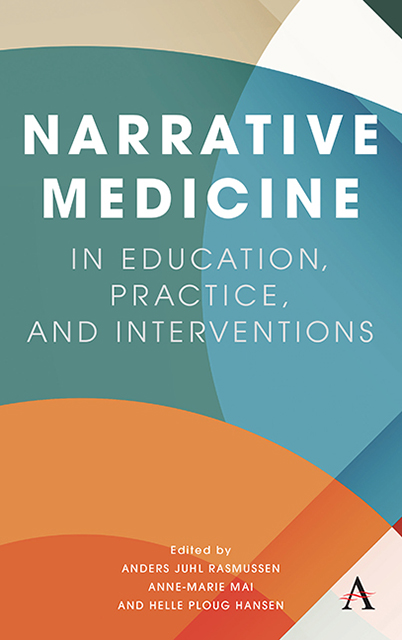Introduction
Published online by Cambridge University Press: 08 June 2023
Summary
Narrative medicine as a field of research
Narrative medicine is a growing field of teaching and research that has grown out of an interdisciplinary interest in medicine which is centered on the person, and it is regarded by some as the most significant innovation in the medical hu-manities (Solomon, 2015; Bleakley, 2015). The vision for our work in narrative medicine at the University of Southern Denmark is to enable the field to become a prominent element in the training of physicians, nurses, and other health pro-fessionals. In addition, the researchers will examine the degree to which this field can become an integral part of the health system, making a crucial con-tribution to the development of innovative and evidence-based approaches to health promotion, treatment, rehabilitation, and palliation for citizens and patients. Thus, the overall ambition is that narrative medicine should make a substantial contribution to meeting complex social challenges by retaining and developing a health system that recognizes each person as an individual with social relations in the context of diagnosis, treatment, nursing, and care.
Narrative medicine was given its name and has had its methodology estab-lished since the beginning of this century by Rita Charon, a medical doctor and professor of internal medicine with a PhD in English literature at Columbia University in New York. Prior to creating the term “narrative medicine,” Charon was a proponent of the development of “narrative ethics.” described as an at-tempt to recognize and acknowledge “the singular meaning of particular hu-man events” (Charon and Montello, 2002, p. ix). Through the creation of the interdisciplinary field of narrative medicine, she extended her scope to include narratives and aspects of narrative in all medical practice, with a particular focus on the value of empathy and ethics:
I use the term narrative medicine to mean medicine practiced with these narrative skills of recognizing, absorbing, interpreting, and being moved by the stories of illness (Charon, 2006, p. 4)
With the aim of promoting clinicians’ understanding of patients’ narratives of illness, Charon and her colleagues at Columbia University brought to bear methods of close reading and creative writing, with the result that these have been adapted and integrated in the teaching of physicians and other health pro-fessionals.
- Type
- Chapter
- Information
- Publisher: Anthem PressPrint publication year: 2022

